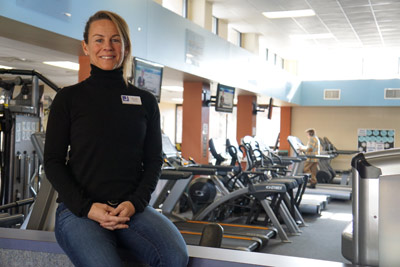
By Debbie Gardner
debbieg@thereminder.com
Susan Whirty has been helping people get and stay active since high school. She began by teaching swimming and working as a lifeguard and swim team coach for her local park and recreation department both during high school and while pursuing her degree. In college, the Central Connecticut State University student then parlayed her passion for helping people get fit into a career, moving from a front desk job at a local health club to the exercise floor to teach aerobics while earning a BS in fitness management.
“I was hooked and have been teaching, training and supervising people and facilities every since,” the 47-year old general manager of health, wellness and membership at the Springfield Jewish Community Center told PRIME.
With January the top month for people to start new shape-up plans, PRIME tapped Whirty for some success tips for the over-40 exerciser. Here’s her
advice:
Q: “Getting back in shape” is a perennial New Year’s resolution. What’s a good starting point for someone who’s over age 40?
“A good starting point for someone over 40 years of age and new to exercise is to get clearance from their physician. Once the doctor gives the 'go ahead,' start slow. Start with walking two to three times per week, anywhere from 20 to 45 minutes per walk. People who are new to exercise need to make physical activity part of their weekly routine, make it a habit. It sounds silly, but putting your exercise session on your 'to-do' list or your calendar helps keep you accountable. Once the habit is in place, then they can progress to a group exercise class or the fitness center. Hire a trainer to teach you proper technique, progression and assist you in setting realistic goals.”
Q: You’re not 30 anymore. What’s a realistic way to set and measure goals for a midlife health reboot?
“A realistic way to set goals for a midlife health reboot is to have a full physical including blood work. Oftentimes at this age, the goal becomes more about health and longevity rather than vanity – blood pressure, cholesterol, things like that become the focus – which will dramatically improve with a well thought out exercise and eating plan. The weight loss, if needed, comes as a by-product of a realistic plan, but it should be a secondary focus to good health, good numbers and feeling good. In addition, this is the time in life that has the potential to be very stressful; kids, jobs, possibly ailing parents. Stress relief and stress management should be part of any fitness/health long range plan.”
Q: Staying motivated is hard at any age. Do you have any tips to help midlife exercisers keep their eye on the prize?
“Motivation is key and results typically fuel motivation. Instead of looking at the scale, ask yourself, ‘How do I feel?’ We often skip that part and get very hung up on numbers, both on the scale, with our clothing size and at the gym. Moving every day helps people feel better. Once people feel better, they are more apt to stay motivated and continue. Get involved in a group exercise class or two. The network of fellow exercisers assists with motivation. You don't want to disappoint your classmates by not showing up. The energy in a group exercise class is palpable, measurable, addictive and motivating. Hire a trainer to help you stay motivated. There are folks out there that don't find time for anything unless they have an appointment or have it written into a calendar. It is the trainer's job to keep you engaged, motivated, working towards and achieving the goals they helped you set.”